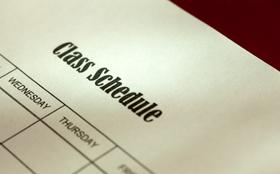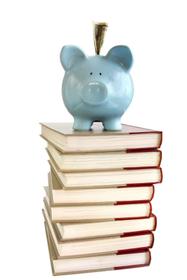For the 2025 school year, there is 1 public preschool serving 406 students in Lackawanna City School District.
Public Preschools in Lackawanna City School District have a diversity score of 0.56, which is less than the New York public preschool average of 0.73.
Minority enrollment is 36% of the student body (majority Hispanic and Black), which is less than the New York public preschool average of 62% (majority Hispanic).
Overview
This School District
This State (NY)
# Schools
4 Schools
1,575 Schools
# Students
2,061 Students
680,405 Students
# Teachers
210 Teachers
57,270 Teachers
Student : Teacher Ratio
10:1
10:1
District Rank
Lackawanna City School District, which is ranked #992 of all 1,015 school districts in New York (based off of combined math and reading proficiency testing data) for the 2021-2022 school year.
The school district's graduation rate of 75-79% has increased from 65-69% over five school years.
Overall District Rank
#994 out of 1020 school districts
(Bottom 50%)
(Bottom 50%)

Math Test Scores (% Proficient)
21%
46%

Reading/Language Arts Test Scores (% Proficient)
20%
49%

Science Test Scores (% Proficient)
45%
78%

Graduation Rate
75-79%
87%

Students by Ethnicity:
Diversity Score
0.58
0.73
# American Indian Students
9 Students
6,882 Students
% American Indian Students
n/a
1%
# Asian Students
78 Students
74,011 Students
% Asian Students
4%
11%
# Hispanic Students
321 Students
208,386 Students
% Hispanic Students
16%
31%
# Black Students
273 Students
108,146 Students
% Black Students
13%
16%
# White Students
1,275 Students
257,567 Students
% White Students
62%
38%
# Hawaiian Students
n/a
1,683 Students
% Hawaiian Students
n/a
n/a
# Two or more races Students
105 Students
23,663 Students
% of Two or more races Students
5%
3%
Students by Grade:
# Students in PK Grade:
90
62,211
# Students in K Grade:
159
99,006
# Students in 1st Grade:
154
97,399
# Students in 2nd Grade:
134
96,389
# Students in 3rd Grade:
141
87,433
# Students in 4th Grade:
137
87,229
# Students in 5th Grade:
156
81,167
# Students in 6th Grade:
141
24,209
# Students in 7th Grade:
140
13,778
# Students in 8th Grade:
155
14,339
# Students in 9th Grade:
159
2,893
# Students in 10th Grade:
162
2,861
# Students in 11th Grade:
160
2,527
# Students in 12th Grade:
153
2,549
# Ungraded Students:
20
6,415
District Revenue and Spending
The revenue/student of $31,373 is higher than the state median of $31,307. The school district revenue/student has declined by 9% over four school years.
The school district's spending/student of $29,571 is less than the state median of $32,183. The school district spending/student has declined by 9% over four school years.
Total Revenue
$65 MM
$78,541 MM

Spending
$61 MM
$80,737 MM

Revenue / Student
$31,373
$31,307

Spending / Student
$29,571
$32,183

Best Lackawanna City School District Public Preschools (2025)
School
(Math and Reading Proficiency)
(Math and Reading Proficiency)
Location
Grades
Students
Rank: n/an/a
15 Inner Dr
Buffalo, NY 14218
(716) 821-5610
Buffalo, NY 14218
(716) 821-5610
Grades: PK-2
| 406 students
Recent Articles

Year-Round Or Traditional Schedule?
Which is more appropriate for your child? A year-round attendance schedule or traditional schedule? We look at the pros and cons.

Why You Should Encourage Your Child to Join a Sports Team
Participating in team sports has a great many benefits for children, there is no doubt. In this article you will learn what those benefits are.

White Students are Now the Minority in U.S. Public Schools
Increasing birth rates among immigrant families from Asia and Central and South America, combined with lower birth rates among white families, means that for the first time in history, public school students in the United States are majority-minority. This shift in demographics poses difficulties for schools as they work to accommodate children of varying language abilities and socio-economic backgrounds.





